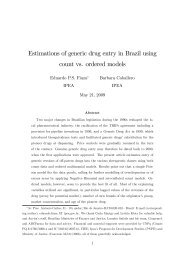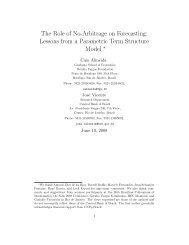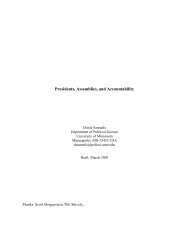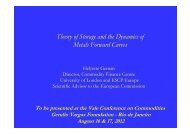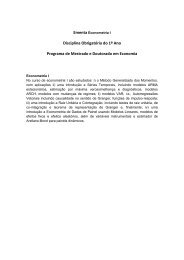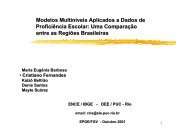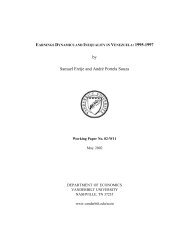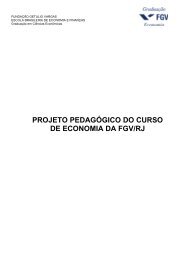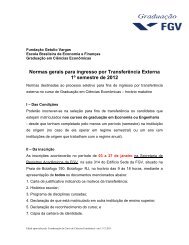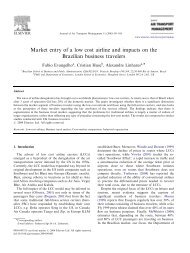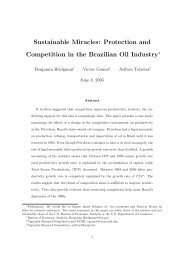Does Money in Schools Matter? Evaluating the Effects ... - EPGE/FGV
Does Money in Schools Matter? Evaluating the Effects ... - EPGE/FGV
Does Money in Schools Matter? Evaluating the Effects ... - EPGE/FGV
Create successful ePaper yourself
Turn your PDF publications into a flip-book with our unique Google optimized e-Paper software.
that <strong>the</strong> relative wages of public school teachers <strong>in</strong>creased between 1997 and 1999,<br />
particularly <strong>in</strong> <strong>the</strong> municipal system <strong>in</strong> <strong>the</strong> Nor<strong>the</strong>ast of Brazil, which <strong>the</strong>y attribute to<br />
FUNDEF. However, <strong>the</strong>re is no study evaluat<strong>in</strong>g <strong>the</strong> impact of FUNDEF us<strong>in</strong>g school level<br />
data and exam<strong>in</strong><strong>in</strong>g its effects on <strong>the</strong> relative proficiency of public school pupils. We th<strong>in</strong>k<br />
that this paper also relates to a broader literature <strong>the</strong> tries to evaluate <strong>the</strong> impact of<br />
resources spent on education and on teacher labor market (see Hanushek, 2003, for<br />
example).<br />
The structure of <strong>the</strong> paper is as follows. In section 2 we describe <strong>the</strong> FUNDEF<br />
program and section 3 describes <strong>the</strong> data. Section 4 presents <strong>the</strong> econometric methodology,<br />
while <strong>the</strong> results are presented <strong>in</strong> section 5 and <strong>the</strong> conclusions <strong>in</strong> section 6.<br />
2) The FUNDEF Program<br />
In each Brazilian municipality, <strong>the</strong> public schools may belong to <strong>the</strong> State system or to <strong>the</strong><br />
municipality system. The new Brazilian constitution, which took effect <strong>in</strong> 1988, stated that<br />
all States, Municipalities and <strong>the</strong> Federal Government had to spend a fixed share of <strong>the</strong>ir<br />
tax and transfer revenues <strong>in</strong> <strong>the</strong>ir public education system. This share was equal to 25% <strong>in</strong><br />
<strong>the</strong> cases of states and municipalities and 18% <strong>in</strong> <strong>the</strong> case of <strong>the</strong> federal government. With<br />
this new legislation, <strong>the</strong> amount of resources allocated to education <strong>in</strong>creased, but <strong>the</strong> so did<br />
heterogeneity of <strong>the</strong> public schools, s<strong>in</strong>ce richer states with a small share of students <strong>in</strong> <strong>the</strong>ir<br />
system were spend<strong>in</strong>g much more per pupil than were poor municipalities with a large<br />
share of students. Moreover, <strong>the</strong>re was no mechanism to enforce that <strong>the</strong> education




